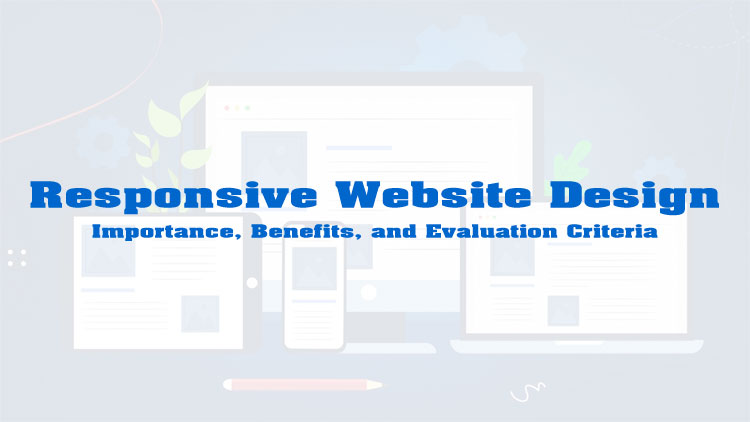Responsive Website Design – Importance, Benefits, and Evaluation Criteria
- Responsive Website Design – Why Is It Important?
- What Is Responsive Web Design?
- Viet SEO's Criteria for Evaluating Whether a Website Is Responsive
- 1. Automatic Layout Adjustment
- 2. Flexible Images & Interface Elements
- 3. Mobile-Friendly Design
- 4. Fast Page Load Speed
- 5. Compatibility Across Browsers & Devices
- 6. Optimized Menus & Navigation Bars
- 7. No Horizontal Scrolling
- 8. Responsive Testing Tools
- Conclusion
Responsive Website Design – Why Is It Important?
Users expect to navigate a website intuitively and smoothly across all devices - whether on a desktop or a mobile phone. As mobile usage becomes the fastest-growing channel, optimizing the user experience on these devices is crucial for retaining customers.
The importance of responsive web design cannot be overstated, especially as the number of transactions via mobile devices continues to rise. A non-mobile-friendly website can drive customers away, directly impacting your conversion rates and revenue.
What Is Responsive Web Design?
Responsive web design (also known as flexible design) is a website development approach that allows content and layouts to automatically adjust for optimal display on all screen sizes—ranging from desktops and laptops to tablets and mobile phones.
Instead of creating multiple versions of a website for different devices, responsive design utilizes CSS and JavaScript techniques to adapt layouts, images, text, and interface elements according to screen resolution. This approach not only streamlines development but also improves usability and performance across platforms.
Many Vietnamese SEO professionals recommend responsive design as a foundational element of modern website strategy, as it significantly enhances user experience, supports SEO best practices, and ensures your site remains competitive in both local and global search rankings.
Benefits of Responsive Web Design:
- Better User Experience: Users can easily browse the site without needing to zoom in, zoom out, or scroll horizontally.
- SEO Optimization: Google prioritizes mobile-friendly websites in search rankings, increasing visibility and traffic.
- Cost & Time Efficiency: Managing a single website version instead of multiple versions for desktop and mobile reduces development and maintenance costs.
- Higher Conversion Rates: A user-friendly interface helps retain visitors and encourages them to take action (purchase, sign up, etc.).
- Future-Proof Technology: A responsive website can adapt to new devices and browsers without requiring structural changes.
Viet SEO's Criteria for Evaluating Whether a Website Is Responsive
To determine whether a website is truly responsive, consider the following criteria:
1. Automatic Layout Adjustment
- The website’s layout changes flexibly when switching between devices.
- Content does not overflow the screen, eliminating the need for horizontal scrolling.
2. Flexible Images & Interface Elements
- Images, videos, buttons, and navigation menus adjust in size to fit different screens.
- Images are optimized to ensure clarity without slowing down page loading speed.
3. Mobile-Friendly Design
- Buttons, links, and forms are easy to interact with on touchscreens.
- Text size is appropriate, eliminating the need to zoom in for readability.
4. Fast Page Load Speed
- The website loads quickly on both Wi-Fi and mobile data connections.
- CSS, JavaScript, and images are optimized to minimize loading time.
5. Compatibility Across Browsers & Devices
- The website functions smoothly on Chrome, Safari, Firefox, Edge, and other browsers.
- No display errors occur on different mobile devices.
6. Optimized Menus & Navigation Bars
- The menu adapts dynamically to smaller screens (e.g., transforming into a hamburger menu).
- Users can easily navigate to essential pages.
7. No Horizontal Scrolling
- The website does not require horizontal scrolling on mobile and tablet devices.
- Content fits well within the screen, avoiding cut-off elements.
8. Responsive Testing Tools
- Google Mobile-Friendly Test: Checks whether a website is mobile-friendly.
- Browser “Responsive Design Mode”: Simulates the website on different devices.
A professional Viet SEO company will thoroughly test each of these elements to ensure your website delivers a seamless experience across all devices, ultimately improving user engagement and supporting stronger SEO performance.
Conclusion
Responsive web design is no longer just a trend—it has become a key standard in modern website development. A responsive website not only enhances user experience but also improves SEO rankings, reduces costs, and increases conversion opportunities. VietSEO agency emphasizes the importance of responsive design as a foundational strategy to ensure websites perform effectively across all devices and meet the expectations of today’s digital users. Additionally, it's essential to fix common web design mistakes that hinder responsiveness, usability, and overall performance.
Ensure that your website displays seamlessly across all devices, from desktops to mobile phones, to provide the best user experience and maximize business efficiency!



